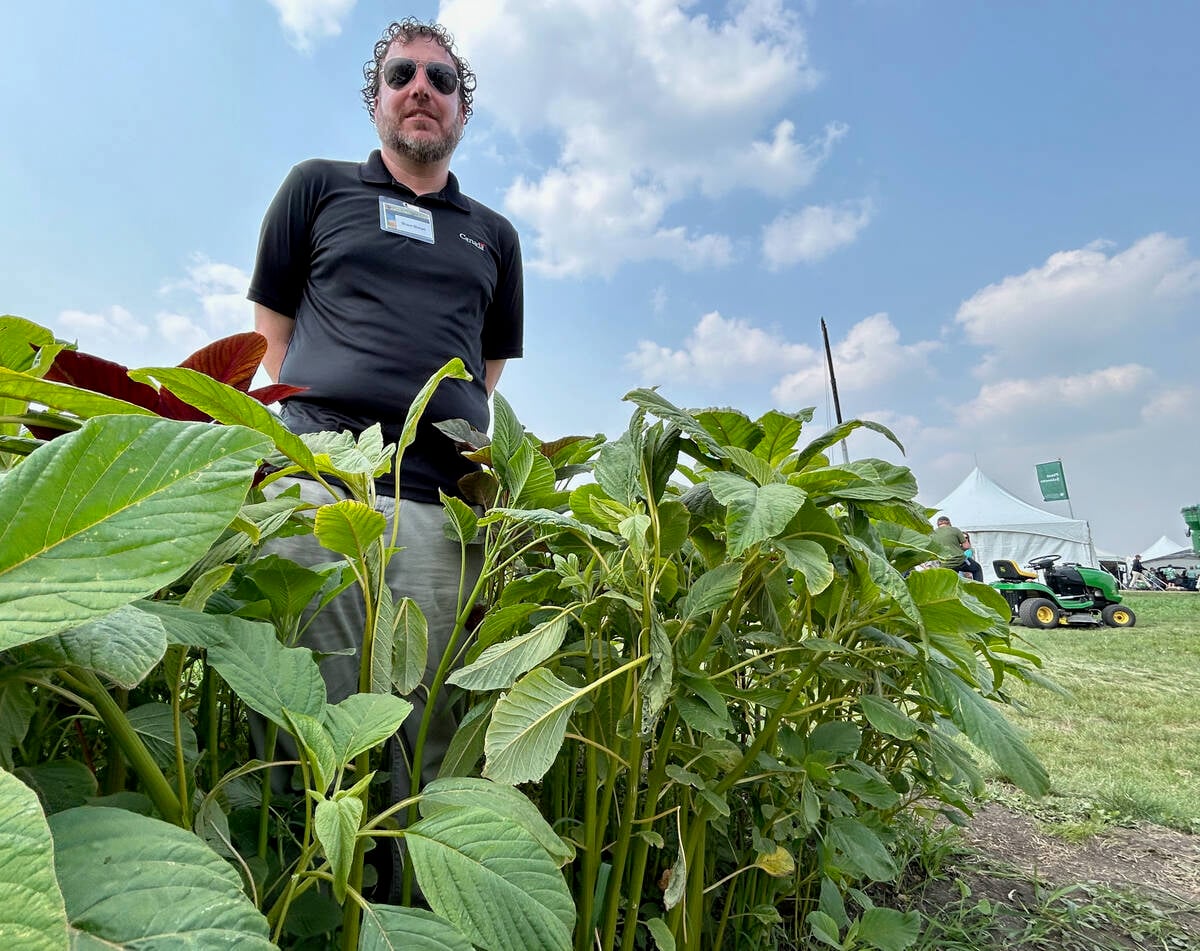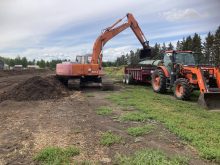It’s time for a new mode of action for kochia control, but not one found in a jug of chemical.
“We’ve had several years in a row of favourable conditions for kochia growth. That also can contribute to selection pressure for resistance, when herbicides are some of the primary measures that we’re using to manage these kochia populations,” says Charles Geddes, a research scientist at Agriculture and Agri-food Canada, Lethbridge.
Kochia can flourish in hot, dry conditions and is more prevalent in southern Alberta, although the pest has also been found in the Peace River region.
Read Also

Glufosinate resistant waterhemp found in U.S. Midwest
News of glufosinate-resistant kochia in the U.S. is concerning as farmers are losing options to control waterhemp, also of the pigweed family.
“It’s assumed that all kochia is now Group 2 resistant, to the point of where it’s not even worth testing for Group 2-resistant herbicides because we find them in every population we test,” said Geddes, who conducted a survey of over 300 kochia populations in Alberta in 2021.
Glyphosate resistance was present in 78 per cent of the populations in that survey.
Group 4 resistance is also growing, and 28 per cent of surveyed kochia populations were resistant to dicamba, a Group 4 herbicide. About 44 per cent of populations surveyed were resistant to fluxroxypur, another Group 4.
“We’re seeing resistance to those three modes of action — Group 2, Group 4 and Group 9,” Geddes said.
Lewis Baarda, on-farm research manager with Farming Smarter in Lethbridge, tried one experiment using chemicals on a limited basis. The group mapped fields with drones, right after harvest when the crop had senesced and the kochia was still bright green and easy to identify.
“We did this in a few fields over four yields. It was a pretty effective technique to figure out where kochia is,” Baarda said.
Once the group found the plants, they sprayed them with a chemical to which the kochia is not yet resistant.
“It’s not a non-chemical control, but it is a little more precise with that chemical application,” he said.
The chemical was sprayed only on about 30 acres where the kochia was, rather than the whole field.
The group also tried planting some salt-tolerant forages next to the kochia.
“That had mixed success,” said Baarda, adding a lot of work has been looking at kochia on prime land, rather than marginal land.
“We found that seeding the salt-tolerant crop mix was harder to establishe than we hoped it was. Just by the nature of seeding it there, you’ve limited your chemical controls. By year two in one location, it did establish pretty well and was competing on that margin between really saline areas and productive areas, so in between that zone was pretty effective.”
The study was done at three locations in southern Alberta, sites close to Medicine Hat, Burdett and Scandia.
Rotation and seeding rates
Geddes said narrow rows and higher seeding rates will promote crops that compete with kochia and reduce the number of seeds going into the soil.
“If you can get effective management of kochia for even a couple years in a row, that will go a long way to decreasing the kochia population in a field. What we found is that combining a four-year crop rotation when we combined the narrow rows and the higher seeding rates in all the crops we grew, we were able to reduce kochia biomass overall by 80 per cent.”
“That 80 per cent threshold is essentially the same as the 80 per cent threshold required by herbicide regulators to register an herbicide for control of a specific weed.” he said.
Geddes and his team also looked at diverse crop rotation, usually summer annuals, or rotating between a winter annual and a summer annual, like winter wheat and then a summer annual crop, as well as a perennial crop. Rotations including winter wheat reduced kochia biomass by 64 per cent and density by 74 per cent on the third year of the study .
Don’t avoid patches
Geddes suggests dealing with patches sooner rather than later.
“Kochia tends to be quite patchy and indeterminate, so it’s green at the time of harvest. What we see a lot is that farmers harvest around the kochia patches in their field and leave those patches until they can deal with them after harvest.”
But research on kochia’s seed viability suggests that this is not a good practice, and ideally, a farmer should come in and cut or mow patches before harvest.
“It’s right during the harvest window where kochia is producing all its seed. If you can come in right before you start harvest and remove those patches that you will be harvesting around anyway, then you can help prevent some of that seed production.”
Other research suggests that burying the seed can help reduce the number of plants that remain after tillage.
“It’s important to balance that with the impacts that tillage can have on soil health, but it can have some positive benefits when it comes to kochia management. Using some strategic tillage in some dense patches might really help with kochia,” Geddes said.
Research continues.
“We’re trying to come up with strategies to manage herbicide-resistant kochia. The issue is likely to become more impactful in the future.”
















